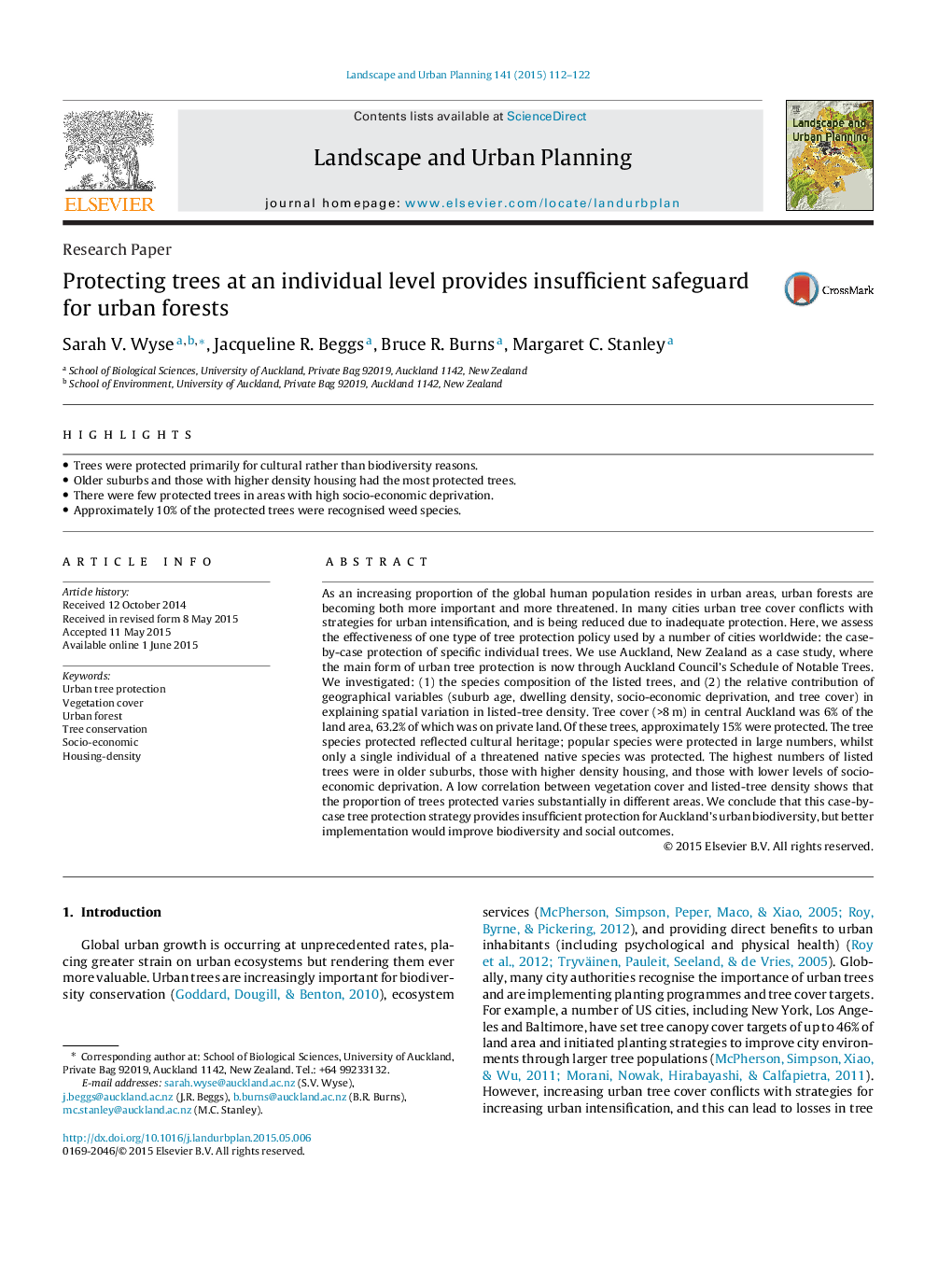| Article ID | Journal | Published Year | Pages | File Type |
|---|---|---|---|---|
| 7461126 | Landscape and Urban Planning | 2015 | 11 Pages |
Abstract
As an increasing proportion of the global human population resides in urban areas, urban forests are becoming both more important and more threatened. In many cities urban tree cover conflicts with strategies for urban intensification, and is being reduced due to inadequate protection. Here, we assess the effectiveness of one type of tree protection policy used by a number of cities worldwide: the case-by-case protection of specific individual trees. We use Auckland, New Zealand as a case study, where the main form of urban tree protection is now through Auckland Council's Schedule of Notable Trees. We investigated: (1) the species composition of the listed trees, and (2) the relative contribution of geographical variables (suburb age, dwelling density, socio-economic deprivation, and tree cover) in explaining spatial variation in listed-tree density. Tree cover (>8Â m) in central Auckland was 6% of the land area, 63.2% of which was on private land. Of these trees, approximately 15% were protected. The tree species protected reflected cultural heritage; popular species were protected in large numbers, whilst only a single individual of a threatened native species was protected. The highest numbers of listed trees were in older suburbs, those with higher density housing, and those with lower levels of socio-economic deprivation. A low correlation between vegetation cover and listed-tree density shows that the proportion of trees protected varies substantially in different areas. We conclude that this case-by-case tree protection strategy provides insufficient protection for Auckland's urban biodiversity, but better implementation would improve biodiversity and social outcomes.
Related Topics
Life Sciences
Agricultural and Biological Sciences
Ecology, Evolution, Behavior and Systematics
Authors
Sarah V. Wyse, Jacqueline R. Beggs, Bruce R. Burns, Margaret C. Stanley,
